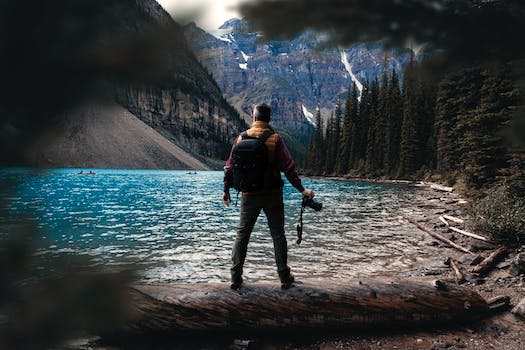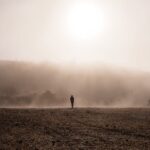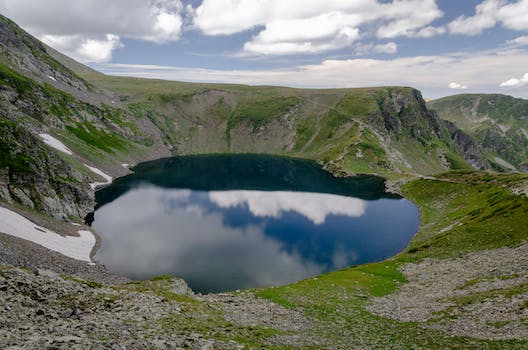Photographing mountain scenery presents a unique set of challenges for anybody interested in capturing nature’s splendor. But if you know what you’re doing, you may make breathtaking mountain photography that does justice to these magnificent natural treasures. This article will teach you all you need to know to take your mountain photography to the next level, from selecting the appropriate equipment to locating the ideal lighting.
- 1. Mountain Photography
- 1.1. Introduction
- 1.2. The Best Time to Photograph Mountains
- 1.3. Equipment for Mountain Photography
- 1.4. Composition Tips for Mountain Photography
- 1.5. Dealing with Weather Challenges
- 2. Introduction
- 2.1. What is Mountain Photography?
- 2.2. Why is Mountain Photography So Popular?
- 2.3. Types of Mountain Photography
- 3. The Best Time to Photograph Mountains
- 3.1. Sunrise and Sunset
- 3.2. Golden Hour
- 3.3. Blue Hour
- 3.4. Weather Conditions
- 3.5. Seasonal Considerations
- 4. Equipment for Mountain Photography
- 4.1. Camera and Lens
- 4.2. Tripod
- 4.3. Filters
- 4.4. Remote Shutter Release
- 4.5. Extra Batteries and Memory Cards
- 5. Composition Tips for Mountain Photography
- 5.1. Rule of Thirds
- 5.2. Leading Lines
- 5.3. Foreground Interest
- 5.4. Depth of Field
- 5.5. Framing and Pacing
- 6. Dealing with Weather Challenges
- 6.1. Wind
- 6.2. Rain and Snow
- 6.3. Fog and Mist
- 6.4. Extreme Temperatures
- 6.5. Lightning
1. Mountain Photography
One of the most common types of nature photography features mountains. Majestic mountains, expansive landscapes, and gorgeous valleys are breathtaking. However, getting the shot you want can be difficult. Here are a few pointers to help you capture breathtaking images of mountains:
First, timing is everything: the golden hours, the first hour after sunrise and the last hour before sunset, are prime for mountain photography. The mountains take on a stunning hue in the warm, gentle light.
Use a tripod: If you want clear photos of the mountains, you need a tripod. It will aid in maintaining a steady hand and preventing shake during photography.
Third, remember to zoom in on the little things; the mountains are full of exciting little things like rocks and plants and animals. Do not be hesitant to get close to these features and photograph them.
Fourth, try shooting from unusual positions to come up with fresh and interesting compositions. Get on a higher view point or crouch down low to shoot.
5. Have patience: Shooting in the mountains takes a steady hand. Be patient and hold off taking pictures until you can have the ideal lighting and weather.
You’ll be able to take breathtaking shots of the mountains using these guidelines.
1.1. Introduction
Photographing in the mountains offers a challenging and rewarding opportunity. Beautiful scenery, dramatic lighting, and rocky landscape make for an ideal setting for photographing nature’s splendor. However, there are several distinct difficulties that must be planned for when shooting in the highlands. Here, we’ll delve into various photographic tricks and strategies for capturing the majesty of mountainous regions in all their glory.
1.2. The Best Time to Photograph Mountains
The optimum light for photographing mountains is at dawn and dusk. This time of day has gentle, warm light and long, dramatic shadows. During certain periods, the sky and the mountains take on more vivid hues. And if you photograph mountains during the blue hour (the twilight time between dawn and sunset), you can get some really beautiful blue and purple tones in your pictures. It’s worth noting, too, that weather can have a major effect on how a mountain scene is lit and how the photo comes out. Clear, sunny days are ideal for capturing the majesty and beauty of the mountains, but cloudy, rainy days can offer their own opportunity for moody, atmospheric photos.
1.3. Equipment for Mountain Photography
If you want to take amazing photographs in the mountains, investing in the correct gear is essential. Here are some must-haves that you may want to pack:
First and foremost, you’ll need a high-quality camera to properly record the stunning scenery of the mountains. Think about getting a wide-angle lens for your DSLR or mirrorless camera.
A solid tripod is necessary for steadying your camera and avoiding fuzzy photos when taking long exposures. Find a tripod that won’t weigh you down too much when hiking.
Filters: When photographing at sunrise or sunset, filters can greatly improve color and contrast. You might want to get a neutral density filter or a polarizing filter.
On extended hikes, a backpack is essential for transporting food, water, and other necessities. The straps and compartments of your backpack should be cushioned and well-organized.
Don’t let your camera die on you or lead you to miss the perfect image by forgetting to bring extra batteries or memory cards. Extra batteries and memory cards will let you to keep shooting throughout the day.
1.4. Composition Tips for Mountain Photography
The composition of a mountain photo is crucial. Achieve professional-quality photographs by following these guidelines.
1. Apply the “rule of thirds,” which states that the subject or horizon should be positioned at one of the intersection points of the frame’s vertical and horizontal thirds.
Add something to the foreground: Putting rocks or flowers in the foreground of your photo might give it more depth and dimension.
Third, experiment with height and angle to produce dynamic and original shots.
Take into account the time of day, as the strong midday sun contrasts with the gentler light of sunrise and dusk. Consider the ambiance you wish to create and make the necessary adjustments.
Keeping these guidelines in mind can help you take better photographs in the mountains and create lasting memories of the natural world.
1.5. Dealing with Weather Challenges
Taking pictures in the mountains is difficult because of the changing light and atmosphere at higher elevations. Expect the unexpected in terms of weather and pack accordingly. Bring all the gear you’ll need, including a waterproof camera case and a lens hood. Take into account the angle of the sun and how it may effect your shots. Taking pictures in the “golden hour,” or the time right after sunrise and right before sunset, can produce beautiful, warm, and ethereal results. Last but not least, don’t be scared to try out new approaches when photographing the mountains.
2. Introduction
Taking photographs of nature, one of the most breathtaking subjects, can be an incredibly fulfilling experience. Mountains are among the most beautiful and breathtaking natural features on Earth. Numerous artists have been moved by their majesty to create visual representations of their peaks, rocks, and spectacular panoramas. However, especially for amateurs, getting a great photo of a mountain might be difficult. Learn how to take breathtaking photographs of mountains by following the advice in this article.
2.1. What is Mountain Photography?
The photographic discipline known as “mountain photography” aims to capture the majestic beauty of mountains in all their splendor. It entails photographing some of the world’s most breathtaking scenery, including snow-capped mountains, hazy valleys, and rolling hills. No matter your skill level as a photographer, the mountains provide a stunning backdrop for stunning photographs.
2.2. Why is Mountain Photography So Popular?
Over the years, photography of mountains has gained in popularity. Many people find themselves unable to resist the temptation to snap a photo of nature in its most pristine state. One of the genre’s draws is the difficulty involved in getting the shot, what with climbing to the top of the mountain and braving the elements. There’s no doubting mountain photography’s allure, whether you’re drawn in by the stunning scenery, the challenging landscape, or the thrill of exploration.
2.3. Types of Mountain Photography
Among landscape photographers, mountain scenes consistently rank among the most sought after subjects. Images of the spectacular mountains, beautiful valleys, and breathtaking panoramas are breathtaking. Different kinds of mountain photography use a wide variety of techniques and aesthetics. There is a subset of mountain photography that will suit your interests and abilities, whether you like taking wide-angle landscape images or detailed portraits of mountain fauna. We’ll go through some of the most prevalent approaches to mountain photography and share some pointers for getting great shots of these breathtaking landscapes.
3. The Best Time to Photograph Mountains
Photographing mountains may be a stunning experience. To capture these natural phenomena in photographs, however, time is essential. The golden hour, which occurs either an hour after dawn or an hour before sunset, is ideal for taking pictures of mountains. The mountains look more stunning in the softer, warmer light that occurs then. The extended shadows also give the scene a greater sense of depth and texture. Midday sun can be too harsh for photographing mountains, casting unattractive shadows. The blue hour, the hour before sunrise or after sunset, is another beautiful period to take pictures of mountains. Beautiful mountain silhouettes against a rainbow sky are possible during this time.
3.1. Sunrise and Sunset
Photographing mountains at dawn and dusk can provide some quite breathtaking results. The warm, gentle light that lights the mountains and valleys at these times can give your photographs a genuinely ethereal quality. The sky’s color can also offer a striking visual element to your photographs. Plan your shoot ahead of time and get to the area early to set up your equipment and select the best vantage point to get the perfect photo at sunrise or sunset. Wait for the light to be perfect before snapping the picture. Beautiful images of mountains at sunrise and sunset can be taken with some preparation and patience.
3.2. Golden Hour
When the sun is at its lowest point in the sky, either right after sunrise or right before sunset, the light is a warm golden color and illuminates the mountains beautifully. The gentle, luminous look created by this light is ideal for photography since it highlights the landscape’s inherent beauty. Shadows are longer and more dramatic during the golden hour, giving your photographs a sense of depth and texture. Now is the moment to get some very breathtaking photographs of alpine scenery, whether from afar or up close. If you want your photographs of the mountains to truly do justice to their natural splendor, then you should take them during the golden hour.
3.3. Blue Hour
Photographers, especially those specializing in mountainscapes, may expect a very wonderful experience during the Blue Hour. At dawn and sunset, the sun is just beyond the horizon, but its rays still cast a magnificent blue glow across the sky. The mountain range is no exception to the rule that this time of year is ideal for photographing breathtaking scenery. During the Blue Hour, the mountains take on an otherworldly appearance, making them ideal subjects for photographers.
3.4. Weather Conditions
The weather has a huge role in the success or failure of a mountain photo shoot. Early morning or late evening, when the light is soft and warm, is ideal for photographing mountains. This can produce a lovely sheen on the mountain tops and valleys, giving your photographs an extra sense of depth and perspective. Cloudy or overcast days can also be ideal for mountain photography because of the dramatic and melancholy ambiance the clouds can generate. The opposite is true during sunny days, when harsh light can diminish color saturation and cast ugly shadows. Keeping an eye on the weather prediction and planning photography trips appropriately will help you get the finest possible shots of these stunning landscapes.
3.5. Seasonal Considerations
There are a few seasonal factors to think about while trying to picture the mountains at their best. The time of day is a major issue to think about. It is commonly agreed that the greatest times to photograph mountains are first thing in the morning or last thing at night, when the light is more dramatic and the shadows are longer. The aesthetic value of mountain photographs can likewise be altered by the passage of time. The shifting hues of the leaves in the fall, for instance, or the stark contrast of snow-covered peaks against a blue sky in the winter, may both make for magnificent photographic elements at different times of the year. The ideal time to take pictures of mountains is very dependant on the photographer and the area.
4. Equipment for Mountain Photography
Having the proper gear is crucial for successful mountain photography. Some must-haves for your next trip are listed below.
First and foremost, you’ll need a high-quality camera to capture the vibrant colors and intricate details of mountain scenery.
If you want sharp photos, even in low light, you need a robust tripod to hold your camera steady.
The enormous views and majestic nature of mountain landscapes are best captured with a wide-angle lens, which is the third tool on this list.
Reduce glare and boost color saturation with a polarizing filter for truly breathtaking alpine images.
5. Use a remote shutter release to prevent blurry photos caused by camera shake.
Pack: A sturdy backpack is essential for transporting and stowing all of your gear while trekking in the mountains.
4.1. Camera and Lens
Having the proper gear may make a huge difference in the caliber of your mountain photography. The camera itself is a crucial piece of equipment. To capture the vivid colors and intricate details of nature in high definition, you’ll need a camera with a decent low-light sensitivity and a high resolution sensor. Different viewpoints and compositions can be attained using a collection of lenses. Both wide-angle and telephoto lenses are useful for photographing expansive landscapes and up-close subjects, respectively. Think about getting either a prime lens, which can provide crisper, more detailed images, or a zoom lens, which can be used to capture subjects from a variety of distances.
4.2. Tripod
Having the proper gear is crucial for successful mountain photography. A tripod is a must-have accessory for taking professional-quality photographs. Using a tripod prevents camera shake when shooting for extended periods of time. As an added bonus, you may experiment with new perspectives and heights when snapping images. Look for a tripod that can be adjusted in height and has a solid ball head if you plan on doing any mountain shooting. Make that the tripod’s weight capacity, maximum height, and lowest height are all suitable for your needs. If you want your mountain photography to improve, consider purchasing a sturdy tripod.
4.3. Filters
Taking pictures in the mountains requires specific gear. Filters are an essential component of equipment. When shooting in harsh lighting conditions, such as direct sunshine or at a high altitude, filters can be used to adjust the quantity of light entering the camera. While a neutral density filter will permit you to employ longer shutter speeds for artistic effects, a polarizing filter will help eliminate glare and boost color saturation. When planning to take photographs of breathtaking mountain scenery, it is imperative that you acquire high-quality filters that are a good fit for your lenses and are constructed from long-lasting materials.
4.4. Remote Shutter Release
When taking pictures in the mountains, you really need a remote shutter release. The photographer can shoot pictures with no movement or fuzz from their hands on the camera. This is crucial when working with a lengthy shutter speed or low light levels. Most cameras support either a wireless or cable remote shutter release.
4.5. Extra Batteries and Memory Cards
It’s important to bring spare batteries and memory cards when you go mountain shooting. You definitely don’t want to miss out on that amazing image because your battery died or your memory card was full. Bring extra batteries and memory cards so you can keep shooting continuously throughout the day. It’s also wise to purchase a hard, watertight case to keep your gear safe from the outdoors.
5. Composition Tips for Mountain Photography
The composition of a mountain scene is crucial if you want to capture its natural beauty. Some things to remember are listed below.
1. Apply the “rule of thirds,” in which the subject or focal point is positioned at one of the intersections of the frame’s horizontal and vertical thirds.
Second, make the scene seem more three-dimensional by include a trail or river that curves to guide the eye into the picture.
Third, focus on the foreground; a rock or a wildflower in the foreground can add a lot of visual interest to your photograph.
The sky is frequently rather spectacular in mountainous areas, so be sure to include some of that in your painting. Make good use of the sky to establish proportion between foreground and background elements.
Using these guidelines, you can take photographs of mountains that truly do justice to their majestic splendor.
5.1. Rule of Thirds
Use the Rule of Thirds, a basic element of photography composition, to give your mountain photos a more professional look and feel. The basic idea is to make a nine-square grid out of your image by dividing it into thirds both horizontally and vertically. Points of interest, such the top of a mountain or a solitary tree, should be located at the four intersections of the lines. This makes for a more pleasing overall composition that effectively emphasizes the image’s subject. Don’t forget to play around with different compositions and angles to create very gorgeous images of nature.
5.2. Leading Lines
In mountain landscape photography, leading lines are crucial for creating a pleasing composition. They give an illusion of depth and perspective by drawing the observer deeper into the picture. Mountain photographs often feature leading lines such as twisting roads, rivers, and craggy outcrops. In order to direct the viewer’s attention to the subject of your photograph, you should scout the composition for natural or man-made objects that can act as leading lines and place them accordingly. Try out several viewpoints and poses to determine what works best for your composition.
5.3. Foreground Interest
Having something of interest in the foreground is essential in mountain photography because it gives the viewer a sense of scale and depth. Anything from distant mountains to nearby trees to a hiker on the trail can serve as a foreground element. Having something of interest in the front can draw the viewer further into the photo, making them feel like they are actually there. Try to frame your photo with an intriguing foreground that contrasts with the majestic mountains in the distance.
5.4. Depth of Field
When photographing mountains, depth of field is essential. The depth of field is the separation between the closest and farthest in-focus elements in a scene. To emphasize a foreground object while keeping the background out of focus, you can adjust the depth of field, and vice versa. Adjust the aperture until you get the effect you want. Remember that the depth of field will be greater with a smaller aperture (bigger f-stop number), and that it will be shallower with a larger aperture (smaller f-stop number).
5.5. Framing and Pacing
The composition of your mountain photos should take into account framing and pace. How you place your subject within the confines of the photograph is referred to as its “composition.” A trail or river could be used as a leading line to direct the viewer’s attention to the focal point of the picture. The term “pacing” is used to describe how things are arranged in the frame to provide the impression of depth and space. A tree in the front, for instance, can help the spectator appreciate the vastness of the mountains in the backdrop. To achieve visually attractive mountain photography, it is vital to consider both framing and tempo when constructing photographs.
6. Dealing with Weather Challenges
Dealing with the weather is a major obstacle for mountain photographers. In the mountains, the weather can change quickly, so it’s best to come prepared for anything. If, for instance, you want to capture the sun rising or setting, you should be aware that the temperature will drop dramatically. Rain, wind, and possibly even snow will test your mettle, so pack accordingly. Wearing layers and carrying necessary equipment will keep you and your camera safe. If you want your shot to go smoothly, you need also consider the weather prediction. Depending on the forecast, you may need to make changes to your plans. You can take beautiful shots of the mountains in any kind of weather if you just keep an open mind and come prepared.
6.1. Wind
Involving coping with weather difficulties is an integral component of mountain photography. Photographers in the highlands often struggle with the effects of wind. Because of this, not only may it be challenging to maintain a steady hand while shooting, but your subjects may also behave erratically. With with forethought and persistence, though, you can use the wind’s power to your advantage and take images that do justice to nature’s splendor. When photographing mountains, keep these pointers in mind to combat the wind:
6.2. Rain and Snow
Weather conditions such as rain and snow can be difficult for photographers, but they can also present a spectacular photographic opportunity. Use a transparent umbrella to shield your camera from the rain as you continue shooting. Enjoy the beautiful patterns and reflections the rain creates on various surfaces. Overexposing your snow photos is easy to do because of the snow’s brilliant white color. If you want more vibrant colors and less glare, a polarizing filter is the way to go. Try out new perspectives and compositions to capture the magic of snowy scenes.
6.3. Fog and Mist
Photographing the mountains in the fog or mist can give the images a more dramatic feel. However, they may make it difficult to take photographs of the breathtaking scenery you came to see. If you’re having trouble getting a clear shot due to the weather, consider playing about with your camera’s exposure settings. Avoid blurry photos caused by camera shake by using a tripod. Recognize the fog and mist as intrinsic to the mountains’ allure, and play around with your camera’s settings to capture shots that are truly your own.
6.4. Extreme Temperatures
Attempting to photograph the alpine landscape during the winter might be difficult due to the extreme cold. It’s best to wear a base layer, an insulating layer, and a waterproof outer layer while venturing out in the cold. It’s also recommended to wear warm socks, a hat, and gloves. Wear light, airy clothing and bring lots of water if you’re going out in the heat. When you need a break, stop what you’re doing and go sit in the shade. Know the warning signs of hypothermia and heat exhaustion and how to protect yourself from them at all times, no matter the weather.
6.5. Lightning
Dealing with weather can be one of the biggest obstacles when trying to take breathtaking photographs in the mountains. As a potential safety hazard and an obstruction to getting the shot you want, lightning is a major obstacle. Always put your safety first while dealing with lightning; run for cover at the first sign of trouble. However, there are a few things you can do to improve your odds of success if you ever find yourself trying to take a shot with lightning in the background. To get a clear shot of the lightning without washing out the rest of the scene, you can utilize a long exposure while mounted on a tripod. A lightning trigger can also be used to automatically snap a picture whenever lightning is detected. Beautiful mountain photography may be taken in any weather with a little forethought and persistence.
Conclusion
Skill, patience, and imagination are all necessary for taking stunning photographs in the mountains. With these pointers in mind, you’ll be able to capture the beauty of the mountains and the surrounding environment in photographs that will take your breath away.





